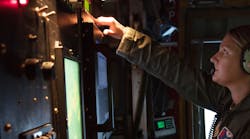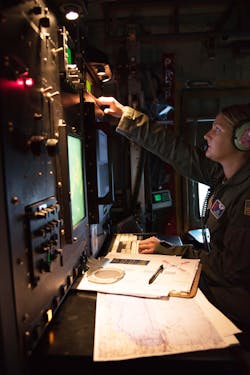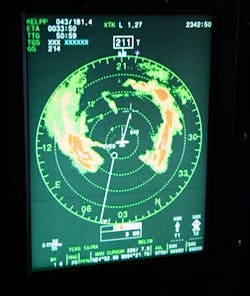The “Hurricane Hunters” of the U.S. Air Force Reserve’s 53rd Weather Reconnaissance Squadron have been kept busy recently, tracking the development and path of the storm that eventually became Hurricane Harvey and has caused significant damage in Texas. Air Force pilots have been flying around the storm formation and collecting data every day to share with the National Hurricane Center in order to predict the storm track.
The storm missions are flown on WC-130J Super Hercules aircraft. The crew consists of at least two pilots, a navigator, an aerial reconnaissance weather officer (ARWO), and a loadmaster. Many of the crew members are reserve airmen who travel from distant parts of the country to be part of a mission. Others are traditional reservists who show up when called, putting their lives and civilian careers on hold to fly into storms.
The WC-130J is a high-wing, medium-range aircraft developed by Lockheed Martin for weather reconnaissance missions. Although the aircraft is equipped for aerial refueling, it also features wing-mounted auxiliary fuel tanks for continuous flight time of almost 18 hours. Extensive weather-measurement instruments and dropsonde recording systems are mounted in the aircraft on removable pallets for ease of launching into the eye of a storm.
During each pass through the eye of the storm, the loadmaster releases a dropsonde to perform critical measurements on the storm, including wind speed, wind direction, temperature, dew point, and pressure (Fig. 1). Data from multiple dropsondes, from a stepped-frequency microwave radiometer (Fig. 2), and from visual observations are transmitted to the National Hurricane Center every 10 minutes throughout the duration of a mission.
“The data we collect is essential to the NHC right now because the capabilities of satellites and drones [are] just not there yet,” said Major Kimberly Spusta, a 53rd WRS ARWO. “To go into the center of the storm to get that data is critical so the NHC can have the most accurate forecasts possible.”



